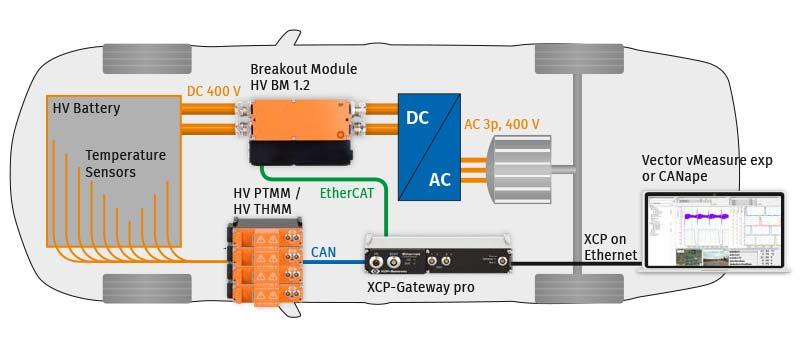

Temperatures are an important factor for the performance of high-voltage batteries, inverters and electric motors. Here you can find out how temperatures are measured in a high-voltage safe way.

Thermal testing of HV batteries
The mobility transition is essentially determined by the battery-powered, electric drivetrain – the optimization of the HV battery is therefore an important adjusting screw. One parameter is the focus of testing: temperature. It is relevant for the flawless and efficient operation of the vehicle. Valuable findings for the safety and correct design of the system can be derived from observing the thermal behavior. This is a good reason to perform detailed and close-meshed measurements of the temperatures inside a traction battery.
Read more: Understanding and Early Prevention of Thermal Runaway

Temperature measurements during “thermal propagation”
Fully or partially electric cars are a promising alternative for sustainable mobility – however, the safe operation of high-voltage batteries plays a crucial role. Thermal propagation tests, i.e. the uncontrolled chain reaction of overheating that jumps from one cell to the next and can ultimately cause the battery to catch fire, are standard according to international norms. Together with measurement technology from CSM, Green Testing Lab from Austria therefore offers temperature tests on batteries during such an extreme event to develop optimization measures at an early stage and minimize potential risks.
Read more: Temperature measurements during “thermal propagation”

High-voltage batteries play a central role in the development of electric vehicles. Temperature management is one of the key factors for their optimal function, which is why temperature measurements are carried out under different conditions during development and pre-series production. The following example shows how such a temperature measurement can be realized in the high-voltage battery.
Read more: Temperature Measurement in High-Voltage Batteries